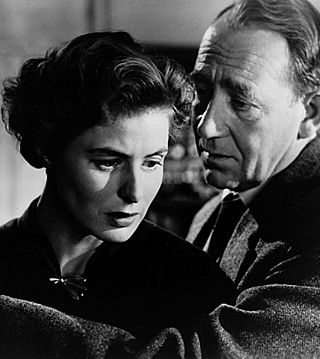
Mathias Wieman was a German stage-performer, silent-and-sound motion picture actor.

The Man Who Was Sherlock Holmes is a 1937 German mystery comedy film directed by Karl Hartl and starring Hans Albers, Heinz Rühmann and Marieluise Claudius.

The Old and the Young King is a 1935 German historical drama film directed by Hans Steinhoff and starring Emil Jannings, Werner Hinz and Leopoldine Konstantin.
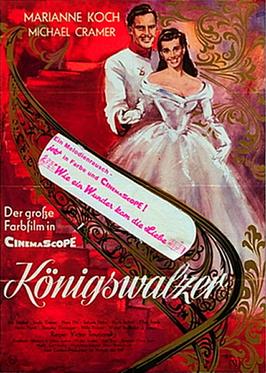
The Royal Waltz is a 1955 West German musical film romance film directed by Victor Tourjansky starring Marianne Koch, Michael Cramer and Linda Geiser. It is a remake of the 1935 film of the same name, part of the tradition of operetta films. It was shot at the Bavaria Studios in Munich and the Carlton Studios in the same city. Location shooting took place in Munich's Englischer Garten and Nymphenburg Palace. The film's sets were designed by the art director Hermann Warm.
Unternehmen Michael is a 1937 German film directed by Karl Ritter, the first of three films about the First World War which he made during the period when the Third Reich was rearming.
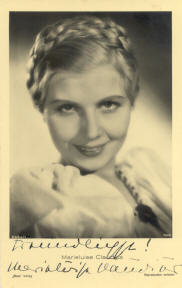
Marie Luise Claudius was a German actress.

The Countess of Monte Cristo is a 1932 German comedy drama film directed by Karl Hartl and starring Brigitte Helm, Rudolf Forster and Lucie Englisch.
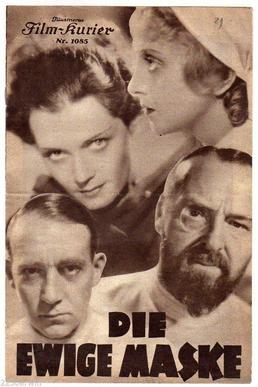
The Eternal Mask is a 1935 Austrian-Swiss drama film directed by Werner Hochbaum and starring Peter Petersen, Mathias Wieman and Franz Schafheitlin. The film was amongst the best ten foreign films of the year judged by the 1937 American National Board of Review of Motion Pictures. It also ran in competition at the 3rd Venice International Film Festival.
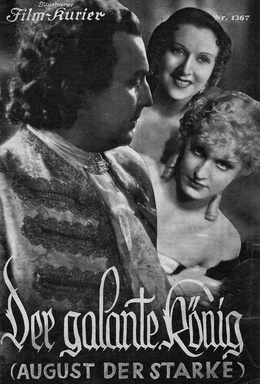
Augustus the Strong is a 1936 German-Polish biographical film directed by Paul Wegener and starring Michael Bohnen, Lil Dagover, and Marieluise Claudius. The film depicts the life of Augustus the Strong, the Eighteenth Century ruler of Saxony and Poland. It was partly shot at the Grunewald Studios in Berlin. The film's sets were designed by the art directors Karl Machus and Ludwig Reiber.

Land Without Women is a 1929 German drama film directed by Carmine Gallone and starring Conrad Veidt, Elga Brink and Clifford McLaglen. It was based on the novel Die Braut Nr. 68 by Peter Bolt. The film is set amongst a community of gold diggers in Western Australia. It was shot at the Staaken and Templehof Studios in Berlin with sets designed by the art directors Hans Sohnle and Otto Erdmann. It was made by the small independent production company Felsom Film using the Tri-Ergon sound-on-film process, the first full-length German-speaking sound film to be released. It was followed a month later by the first all-talking film Atlantik, which had been made in Britain.

The War of the Oxen is a 1943 German historical film directed by Hans Deppe and starring Elfriede Datzig, Paul Richter and Wastl Lichtmanegger. It is an adaptation of Ludwig Ganghofer's 1914 novel of the same title.

The Golden Anchor is a 1932 German-French drama film directed by Alexander Korda and starring Albert Bassermann, Ursula Grabley, and Mathias Wieman. It is the German-language version of Marius (1931), based on Marcel Pagnol's play of the same title. Such multi-language versions were common during the early years of sound. It was made at the Joinville Studios by the European branch of Paramount Pictures.

The Last Summer is a 1954 West German drama film directed by Harald Braun and starring Hardy Krüger, Liselotte Pulver and Mathias Wieman. It was shot at the Bavaria Studios in Munich. The film's sets were designed by the art directors Kurt Herlth and Robert Herlth.
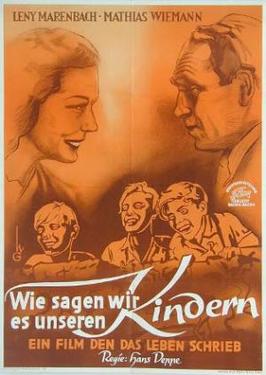
How Do We Tell Our Children? is a 1949 German comedy film directed by Hans Deppe and starring Leny Marenbach, Mathias Wieman and Hilde Körber. The film was made by the major German studio UFA in 1944, but was not released until several years after the end of the war.

The Voice of Love is a 1934 German musical comedy film directed by Victor Janson and starring Marcel Wittrisch, Maria Beling, Marieluise Claudius. It was in the tradition of operetta films. It portrays a complex series of interactions between a celebrated tenor and a female music student who has decided to romantically pursue him.

Love's Carnival is a 1930 German drama film directed by Hans Steinhoff and starring Lien Deyers, Mathias Wieman, and Eduard von Winterstein. The film is base upon the play by Otto Erich Hartleben. It was shot at the Babelsberg Studios in Berlin. The film's sets were designed by the art director Robert Herlth.

Love and the First Railway is a 1934 German historical comedy film directed by Robert Neppach and starring Jakob Tiedtke, Ida Wüst, and Karin Hardt. The plot revolves around the construction of the railway line between Berlin and Potsdam in the 1830s, the first in the Kingdom of Prussia.
My Life for Maria Isabella is a 1935 German drama film directed by Erich Waschneck and starring Viktor de Kowa, Maria Andergast and Peter Voß. It is a military drama, the Maria Isabella of the title being the name of a regiment. Heavy cuts were imposed by the censors because of fears the film's mutiny scenes were too attractively portrayed. Critics were not impressed by the casting of Viktor de Kowa, known for his light musical comedy roles, as the film's hero.

Between Heaven and Earth is a 1934 German historical drama film directed by Franz Seitz and starring Rudolf Klein-Rogge, Heinz Klingenberg, Attila Hörbiger and Karin Hardt. It was shot at the Bavaria Studios in Munich. The film's sets were designed by the art director Max Seefelder. It is based on the 1856 novel of the same title by Otto Ludwig which was subsequently remade as a 1942 film.

The Valley of Love is a 1935 German comedy film directed by Hans Steinhoff and starring Käthe Gold, Richard Romanowsky and Marieluise Claudius. It was shot at the Johannisthal Studios of Tobis Film in Berlin. The film's sets were designed by the art director Franz Schroedter. It is based on the 1902 farce Das Tal des Lebens by Max Dreyer. It was given a fresh release in 1950 by Deutsche London Film.


















